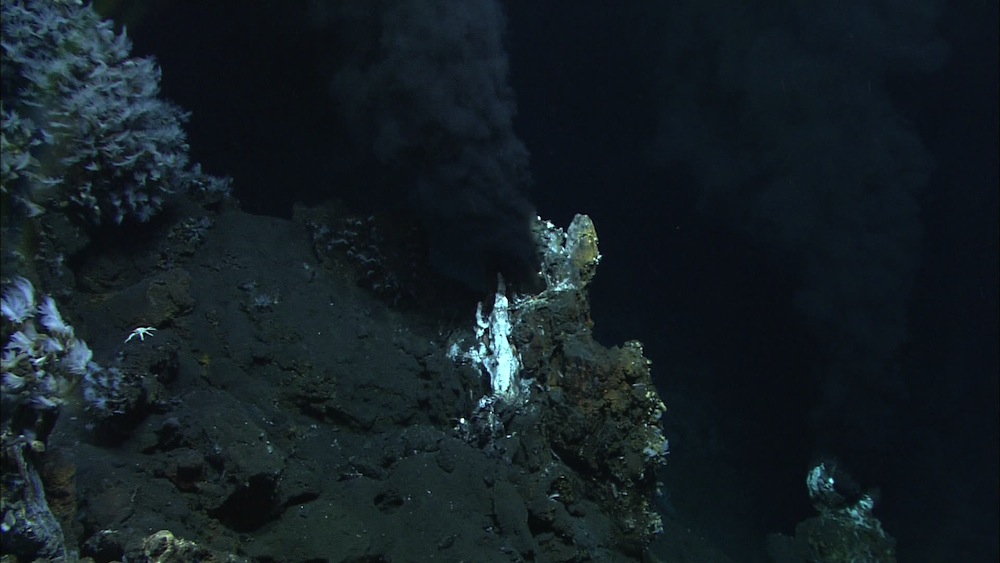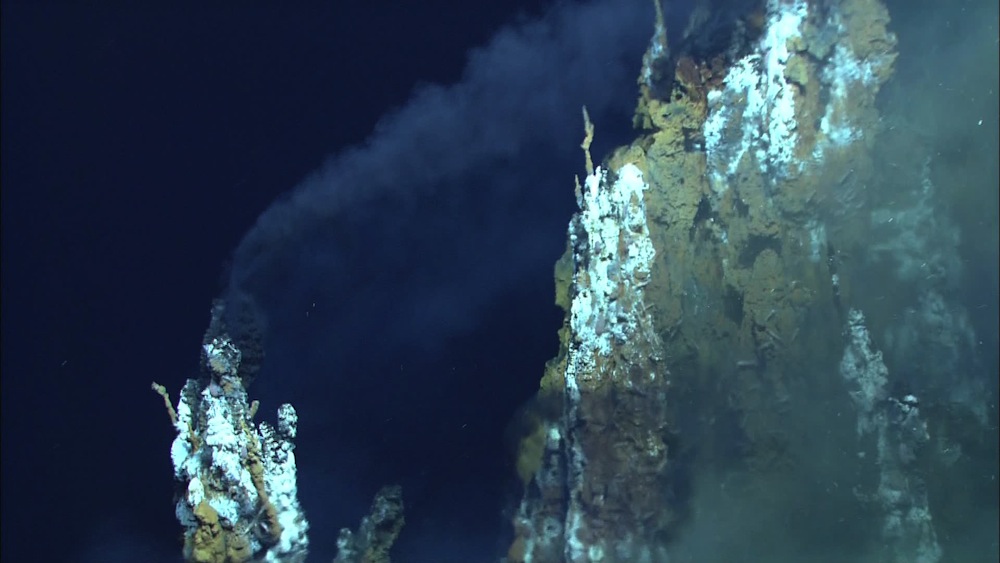'Black Smoker' Viruses Steal Genes from Their Pals

Deep-sea viruses may hijack the genes they then use to super-charge bacteria in an effort to generate more viruses, researchers say.
These genes apparently originated from the bacteria themselves, suggesting the viruses can steal genes from the microbes and potentially pass them around, helping drive evolution in the abyss, scientists added.
Although the deep sea never sees the light of day, seafloor hot springs known as hydrothermal vents more than a mile beneath the ocean's surface can be home to thriving ecosystems, including giant tube worms 6 feet (2 meters) tall. [Photos: Bizarre Life Found at Deep-Sea Vents]
To learn more about the mysterious nature of life in the deep sea, researchers deployed an unmanned submarine in the western Pacific Ocean and the Gulf of California. The sub collected samples of seawater at depths of more than 6,000 feet (1,830 meters) near six "black smokers," chimneylike structures that form near hydrothermal vents and emit plumes of black, mineral-rich seawater at temperatures surpassing 500 degrees Fahrenheit (260 degrees Celsius).
The scientists analyzed DNA snippets in these samples, reconstructing near-complete genomes of microbes from these hydrothermal vents. In addition to a marine bacterium known as SUP05, which lives off sulfur in hydrothermal vent plumes, the investigators found 18 bacteriophages, or viruses that infect bacteria.
As expected, the genetic data suggested the viruses preyed on SUP05, possessing genes that would help them invade the bacterium. Viruses are the most abundant biological entities in the oceans, and often kill marine microbes.
Surprisingly, the scientists discovered that 15 of the 18 viral genomes possessed genes closely related to ones deep-sea bacteria use to oxidize sulfur — that is, to extract energy from the element.
Sign up for the Live Science daily newsletter now
Get the world’s most fascinating discoveries delivered straight to your inbox.
"We weren't expecting or looking for these genes in viruses," said study author Gregory Dick, a geomicrobiologist at University of Michigan at Ann Arbor. "We were looking for them in bacteria, and we found them there, but we also found them in viruses."
"It was exciting to find that these genes were so consistently present in viruses across many different samples and geographic locations," Dick said. "We found them in four different families of viruses, across five different vents in the Lau Basin in the western Pacific Ocean and at one site in the Gulf of California. This suggests that viruses commonly carry genes for sulfur oxidation."

The viruses do not directly use the sulfur for energy on their own — that is, they do not "eat" the sulfur. Rather, the researchers suggest the viruses use the hijacked genes to stimulate bacteria they infect to consume any globules of sulfur the bacteria have stored, releasing energy the viruses then use to replicate and spread.
Similar interactions between viruses and microbes have been seen before in the shallow ocean. Viruses that prey on photosynthetic bacteria, that can convert sunlight into energy, can inherit photosynthesis genes from their victims. These new findings mark the first time such a relationship was seen in a chemosynthetic system, one in which the microbes rely solely on chemicals, rather than sunshine, as their energy source.
The investigators suggest the viruses somehow glommed onto genes from bacteria in the past during ancient infections. They note the viruses may also serve as vehicles to shuffle these genes to other bacteria.
"Our findings suggest that viruses are a potentially important agent of evolution by transferring sulfur oxidation genes between different bacterial cells, a process called horizontal gene transfer," Dick told Live Science.
The scientists detailed their findings online today (May 1) in the journal Science.
Follow us @livescience, Facebook & Google+. Original article on Live Science.










